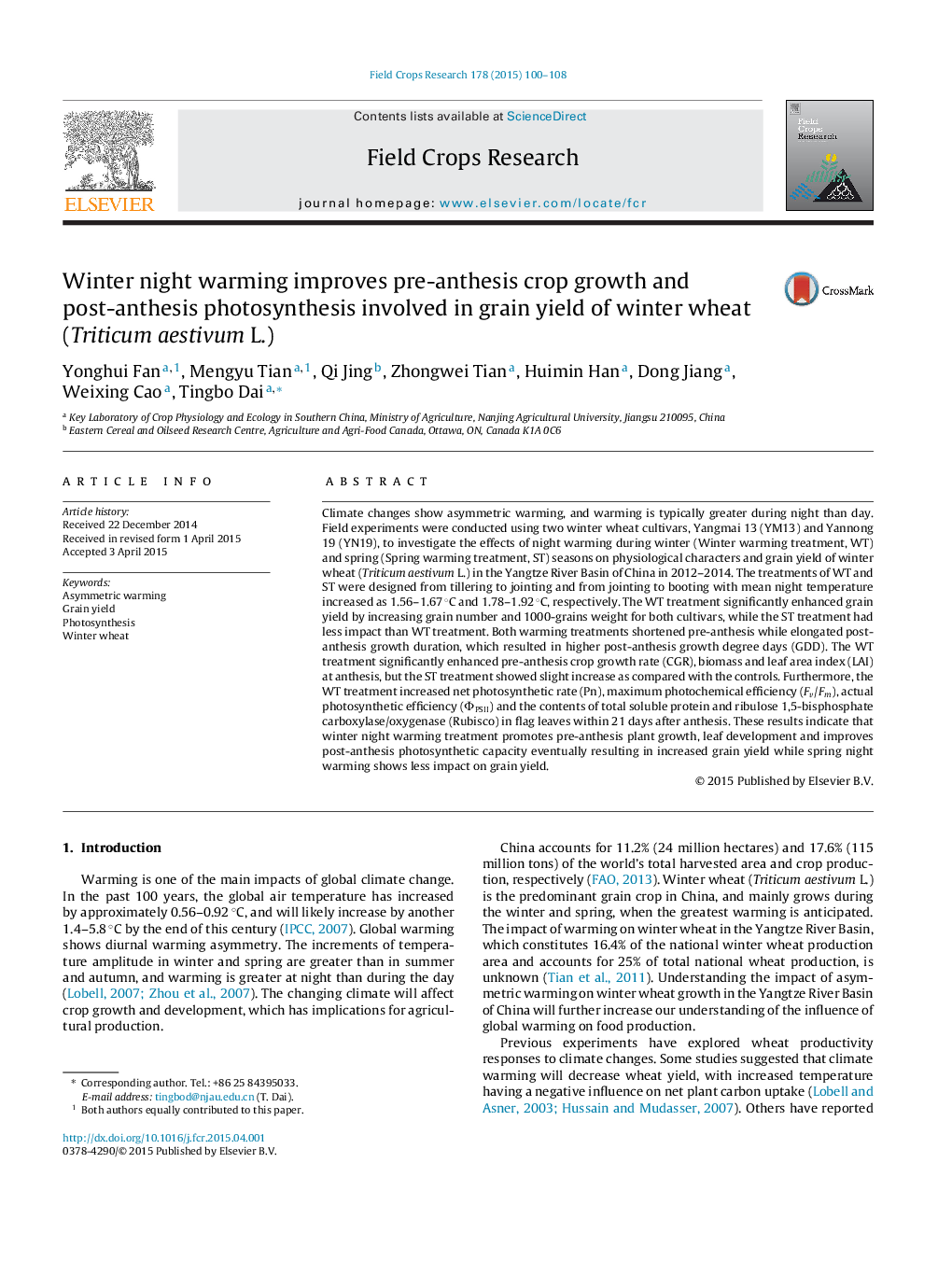| Article ID | Journal | Published Year | Pages | File Type |
|---|---|---|---|---|
| 6374844 | Field Crops Research | 2015 | 9 Pages |
Abstract
Climate changes show asymmetric warming, and warming is typically greater during night than day. Field experiments were conducted using two winter wheat cultivars, Yangmai 13 (YM13) and Yannong 19 (YN19), to investigate the effects of night warming during winter (Winter warming treatment, WT) and spring (Spring warming treatment, ST) seasons on physiological characters and grain yield of winter wheat (Triticum aestivum L.) in the Yangtze River Basin of China in 2012-2014. The treatments of WT and ST were designed from tillering to jointing and from jointing to booting with mean night temperature increased as 1.56-1.67 °C and 1.78-1.92 °C, respectively. The WT treatment significantly enhanced grain yield by increasing grain number and 1000-grains weight for both cultivars, while the ST treatment had less impact than WT treatment. Both warming treatments shortened pre-anthesis while elongated post-anthesis growth duration, which resulted in higher post-anthesis growth degree days (GDD). The WT treatment significantly enhanced pre-anthesis crop growth rate (CGR), biomass and leaf area index (LAI) at anthesis, but the ST treatment showed slight increase as compared with the controls. Furthermore, the WT treatment increased net photosynthetic rate (Pn), maximum photochemical efficiency (Fv/Fm), actual photosynthetic efficiency (ФPSII) and the contents of total soluble protein and ribulose 1,5-bisphosphate carboxylase/oxygenase (Rubisco) in flag leaves within 21 days after anthesis. These results indicate that winter night warming treatment promotes pre-anthesis plant growth, leaf development and improves post-anthesis photosynthetic capacity eventually resulting in increased grain yield while spring night warming shows less impact on grain yield.
Related Topics
Life Sciences
Agricultural and Biological Sciences
Agronomy and Crop Science
Authors
Yonghui Fan, Mengyu Tian, Qi Jing, Zhongwei Tian, Huimin Han, Dong Jiang, Weixing Cao, Tingbo Dai,
